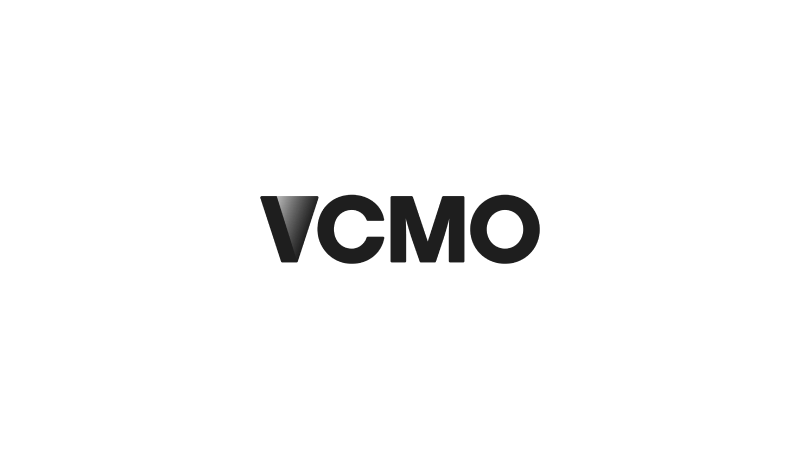From SWOT to SOSTAC®—frameworks every CEO must know to align marketing with commercial strategy.
Introduction – Why Models Matter at Board Level
In the boardroom, marketing is often reduced to conversations about campaigns, budgets, or quarterly lead volumes. Yet the true role of strategic marketing leadership is broader and far more consequential: it is about shaping the conditions for sustainable growth, investor confidence, and long-term enterprise value. To achieve this, businesses need more than creative ideas or tactical execution—they need structured, evidence-based frameworks that ensure marketing decisions are both commercially sound and strategically aligned.
This is where marketing strategy models play a critical role. Far from being academic exercises, these frameworks provide the discipline and clarity that allow leadership teams to navigate uncertainty, test assumptions, and build strategies grounded in data and insight. Used effectively, they become a governance tool—ensuring that marketing is accountable not just for activity, but for measurable business outcomes.
In this article, we explore six of the most influential models that every CEO, founder, and investor should be familiar with: SOSTAC®, the 4Ps, PESTEL, SWOT, Porter’s Five Forces, and the Business Model Canvas. Together, they form a baseline toolkit for strategic planning—helping you to assess your current position, identify growth opportunities, and make better-informed decisions that strengthen both performance and enterprise value.
1. SOSTAC® – A Framework for Marketing Governance
PR Smith’s SOSTAC® planning framework remains one of the most widely respected models in marketing strategy, not only because of its clarity but because of its governance value. By breaking marketing planning into six logical stages—Situation Analysis, Objectives, Strategy, Tactics, Actions, and Control—it provides a disciplined roadmap that ensures activity is rooted in evidence, aligned with business goals, and continuously measured.
For CEOs and investors, the strength of SOSTAC® lies in its ability to make marketing accountable. It forces leadership teams to define measurable objectives, link them directly to wider business outcomes, and establish controls that track progress over time. This is particularly powerful for scale-ups and PE-backed companies, where investor confidence depends on demonstrating a structured and transparent approach to growth.
Used effectively, SOSTAC® prevents marketing from being reduced to a series of disconnected campaigns. Instead, it embeds a culture of strategic planning and review, ensuring that marketing spend delivers both short-term impact and long-term enterprise value. It also provides boards with a common language for discussing marketing—helping non-marketers engage in the process and hold teams accountable to agreed goals.
“The discipline of SOSTAC® forces leadership teams to stop chasing campaigns and start managing marketing as a board-level growth function.”
Lydia McClelland, Chartered Fractional CMO & Licensed SOSTAC® Trainer, VCMO
2. The 4Ps – Operational Levers for Growth
The 4Ps framework—Product, Price, Place, and Promotion—remains one of the most enduring strategy models in marketing. Its strength lies in its simplicity: by analysing these four variables, leadership teams can better understand how their offering is positioned, how value is captured, and how effectively the business reaches its customers. For CEOs and founders, it provides a practical lens through which to align marketing decisions with commercial objectives.
It is worth noting that the original 4Ps have been extended in later adaptations to include elements such as People, Process, and Physical Evidence, creating a broader “7Ps” model. While these additional dimensions can add nuance, particularly in service industries, the original framework still serves as a powerful starting point. It forces leaders to focus on the fundamentals: the product being offered, the pricing strategy, the distribution channels, and the way the business communicates its value.
For investors, the 4Ps provide a simple but effective test of marketing maturity. Misalignment between these levers often signals deeper challenges—whether in brand positioning, margin management, or go-to-market execution. When used consistently, the framework helps boards ensure that operational decisions in marketing directly support revenue growth and competitive strength.
Take a more in-depth look: A Guide to Mastering The 4Ps Marketing Framework
3. The Business Model Canvas – Stress-Testing Value Creation
The Business Model Canvas (BMC) is a powerful tool for visualising how a company creates, delivers, and captures value. By mapping nine key building blocks—customer segments, value proposition, channels, customer relationships, revenue streams, key resources, key activities, key partnerships, and cost structure—it offers leaders a holistic view of the business model in action.
For CEOs, the BMC is invaluable in aligning marketing strategy with the broader mechanics of the business. It highlights whether the value proposition is clearly defined, whether customer segments are being targeted effectively, and whether the revenue model supports long-term profitability. By making these elements visible on a single page, it enables leadership teams to quickly identify gaps, inefficiencies, or opportunities for innovation.
For investors, the canvas provides a rapid way to stress-test scalability. It demonstrates whether the business has the structural foundations to support growth, whether partnerships and resources are aligned, and whether costs are proportionate to value creation. When paired with marketing frameworks like SOSTAC® or SWOT, the BMC ensures that strategy is not only well designed but fully integrated with the organisation’s operational and financial realities.
Take a more in-depth look: A Guide to Mastering The Business Model Canvas
4. PESTEL – Scanning the External Environment
While many strategy models focus on internal levers, the PESTEL framework widens the lens to capture external forces that can shape an organisation’s success. By systematically examining Political, Economic, Social, Technological, Environmental, and Legal factors, businesses gain a clearer view of the macro-environment in which they operate.
For leadership teams, PESTEL is less about prediction and more about preparedness. Political shifts can alter trade dynamics or regulation, economic cycles influence consumer confidence and pricing power, and technological advances may redefine entire categories overnight. Social and environmental pressures are now equally critical, with changing consumer expectations around sustainability and ethics increasingly influencing purchasing decisions and investor scrutiny alike. Legal developments, from data privacy laws to sector-specific compliance, add another layer of complexity.
The power of PESTEL for CEOs and investors lies in its ability to highlight risks and opportunities early, enabling proactive rather than reactive responses. It ensures that marketing strategies are not developed in a vacuum but are firmly grounded in the realities of the operating environment. By embedding PESTEL into strategic reviews, boards can make more resilient decisions and equip their businesses to adapt faster than competitors.
Take a more in-depth look: A Guide to Mastering The PESTEL Marketing Framework
5. Porter’s Five Forces – Assessing Competitive Pressure
Developed by Michael Porter, the Five Forces framework provides a structured way to assess the competitive pressures shaping any industry. By examining competitive rivalry, the bargaining power of buyers, the bargaining power of suppliers, the threat of new entrants, and the threat of substitutes, leaders gain a clearer view of industry attractiveness and where to focus their efforts for sustainable growth.
For CEOs and founders, the model is invaluable in highlighting the realities of market positioning. A high level of rivalry or buyer power, for example, may demand investment in differentiation or customer retention. Strong supplier leverage might push leadership to explore alternative sourcing or vertical integration. Meanwhile, the presence of substitutes or low entry barriers could signal the need for innovation and brand building to defend market share.
For investors, Five Forces provides a due diligence lens: it helps assess whether a company’s margins are defensible and whether its strategy accounts for structural pressures in the sector. Businesses that systematically apply this model tend to make more disciplined resource allocation decisions, ensuring marketing is focused on areas where it can genuinely create competitive advantage rather than being spread too thinly.
Take a more in-depth look: A Guide to Mastering Porter's Five Forces Framework
6. SWOT – Aligning Strategy with Capabilities
The SWOT framework—Strengths, Weaknesses, Opportunities, and Threats—remains one of the most widely used strategy tools, not because of its simplicity but because of its versatility. When conducted rigorously, a SWOT analysis acts as a bridge between external realities and internal capabilities, ensuring that strategy is both ambitious and achievable.
For CEOs and boards, the value of SWOT lies in its ability to bring focus. It highlights where the business has genuine competitive advantages, whether in brand equity, customer relationships, or intellectual property. At the same time, it surfaces areas of vulnerability—such as overreliance on a single channel or gaps in digital capability—that could undermine growth if left unaddressed.
On the external side, SWOT helps leadership teams evaluate opportunities with greater clarity, from new markets to shifting consumer trends, while also scanning for threats such as emerging competitors or regulatory changes. By forcing businesses to confront both sides of the equation, SWOT supports more balanced decision-making.
Crucially, the framework is most effective when treated as a living exercise rather than a one-off workshop. For investors in particular, a regularly updated SWOT demonstrates that leadership has a realistic view of the company’s trajectory and is willing to adapt strategy as conditions evolve.
Take a more in-depth look: A Guide to Mastering The SWOT Marketing Framework
“When used properly, SWOT is not just a box-ticking exercise. It is the lens through which leaders connect internal strengths to external opportunities—and confront uncomfortable weaknesses head-on.”
How to Use These Models Together
Each of these frameworks is powerful in its own right, but their real strength lies in how they complement one another. Rather than treating them as isolated tools, leadership teams should think of them as an interconnected system for building and stress-testing strategy.
For example, the Business Model Canvas and the 4Ps are particularly effective for examining internal capabilities and operational levers. The insights they generate—around value proposition, pricing, distribution, or resource alignment—naturally feed into the Strengths and Weaknesses elements of a SWOT analysis. This ensures that strategy reflects not only ambition but also a clear-eyed assessment of current capacity.
Conversely, external frameworks such as PESTEL and Porter’s Five Forces provide the data to populate the Opportunities and Threats dimensions of SWOT. Whether it’s regulatory change, new entrants, or shifting consumer expectations, these models ensure that businesses are factoring macro and competitive forces into their planning.
By using the models in combination, CEOs and investors gain a multi-layered view of their business environment. The result is a more disciplined approach to strategic planning—one that connects internal strengths to external opportunities while anticipating risks. This integrated perspective is often what separates resilient businesses from those caught unprepared.
From Analysis to Action with SOSTAC®
The strength of these models is not simply in what they reveal individually, but in how they provide the evidence base for disciplined planning. When used together, the insights from the Business Model Canvas and 4Ps (internal focus) combined with PESTEL and Porter’s Five Forces (external focus) can be distilled into a robust SWOT analysis. This synthesis captures the organisation’s true position—its strengths, vulnerabilities, opportunities, and risks.
This output is invaluable in shaping the first “S” of the SOSTAC® framework: Situation Analysis. By grounding the analysis in evidence rather than assumptions, leadership teams gain a clear picture of where the business stands today. From here, it becomes easier to define the critical strategic forces at play, prioritise what matters most, and set meaningful objectives that go beyond generic growth targets.
The flow is deliberate: SWOT informs Objectives, which in turn guide Strategy. From there, leadership can design the Tactics and Actions that will deliver impact, all underpinned by robust Control mechanisms to measure progress. In this way, the models move from being static frameworks to dynamic inputs that power a repeatable cycle of planning, execution, and review.
Learn more about VCMO's strategic approach with SOSTAC by clicking this link.
“The power of these models lies in how they work together—translating analysis into strategy, strategy into execution, and execution into measurable impact.”
Rachael Wheatley - Chartered Fractional CMO, VCMO
Reflective Triggers for Leaders
Once the outputs of SWOT and SOSTAC® have been built into the strategic cycle, the real challenge for leadership teams is consistency. These frameworks are only valuable if they are applied regularly and with rigour. For CEOs, founders, and investors, this means embedding them into governance rhythms—annual strategy reviews, quarterly board meetings, and even monthly performance check-ins.
To assess whether your business is applying these models effectively, consider the following questions:
- Situation Analysis: Is your view of the market grounded in up-to-date evidence from tools like PESTEL and Five Forces, or are decisions still being made on instinct?
- Objectives: Have you set measurable marketing objectives that link directly to growth, profitability, or valuation targets?
- Strategy: Does your plan differentiate you from competitors, or does it risk blending into the noise of the market?
- Tactics and Actions: Are resources aligned to the priorities that matter most, or spread too thinly across low-impact activities?
- Control: Do you have clear metrics in place to measure ROI, and is progress reviewed at board level?
If the answer to any of these is “not recently,” it may be time to revisit the basics. Structured reflection is what keeps strategy alive, relevant, and commercially impactful.
Conclusion – From Models to Market Impact
Marketing strategy models are often dismissed as academic exercises, yet when applied with discipline they become some of the most powerful tools available to leadership teams. For CEOs, founders, and investors, their value lies not in complexity but in the clarity they bring: a way to ground decisions in evidence, test assumptions, and ensure that marketing is accountable for driving commercial outcomes.
Individually, each model offers unique insights—SOSTAC® for planning discipline, the 4Ps for operational levers, PESTEL and Five Forces for external scanning, SWOT for synthesis, and the Business Model Canvas for value creation. Together, they provide a structured system for assessing both internal capacity and external opportunity. When this system is embedded into the strategic cycle, it transforms marketing from a cost centre into a driver of growth, resilience, and enterprise value.
The message is clear: these frameworks are not optional extras, but essential disciplines for businesses competing in volatile markets. The companies that revisit them regularly are better placed to anticipate change, allocate resources wisely, and build strategies that endure. For leadership teams serious about growth, adopting these models is not a matter of best practice—it is a matter of survival and success.
About VCMO
VCMO is a UK-based provider of fractional marketing services, supporting B2B SMEs—ranging from funded scale-ups to mid-tier and private equity-backed businesses—through key moments of growth and transformation. Its Chartered Fractional CMOs and SOSTAC® certified planners embed strategic marketing leadership into organisations navigating product launches, new market entry, acquisitions, and leadership gaps.
What’s a Rich Text element?
The rich text element allows you to create and format headings, paragraphs, blockquotes, images, and video all in one place instead of having to add and format them individually. Just double-click and easily create content.
- By following these tips, you can make sure you’re noticed on LinkedIn and start building the professional connections you need to further your career.
-

Static and dynamic content editing
A rich text element can be used with static or dynamic content. For static content, just drop it into any page and begin editing. For dynamic content, add a rich text field to any collection and then connect a rich text element to that field in the settings panel. Voila!
How to customize formatting for each rich text
Headings, paragraphs, blockquotes, figures, images, and figure captions can all be styled after a class is added to the rich text element using the "When inside of" nested selector system.


Ready to take your marketing to the next level? Let us help you get there.
Subscribe to Our Newsletter
Fractional Edge is our montly newsletter sharing expert opinion on the latest trends in fractional leadership, curated marketing content from leading sources, VCMO events, and much more. Subscribing is quick — just add your name and email.











.jpg)





